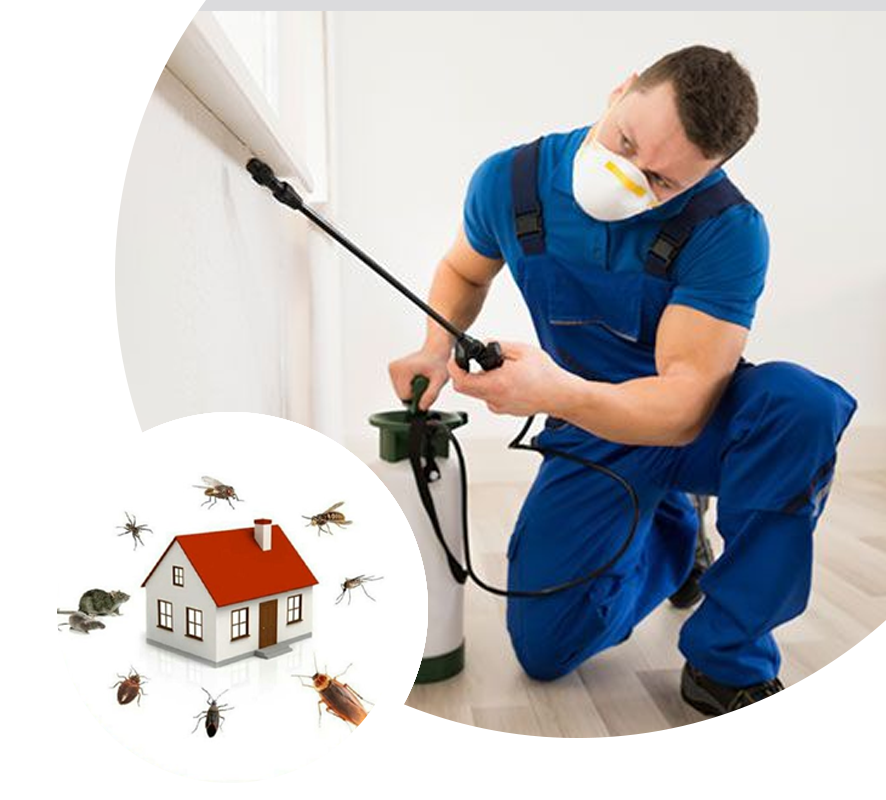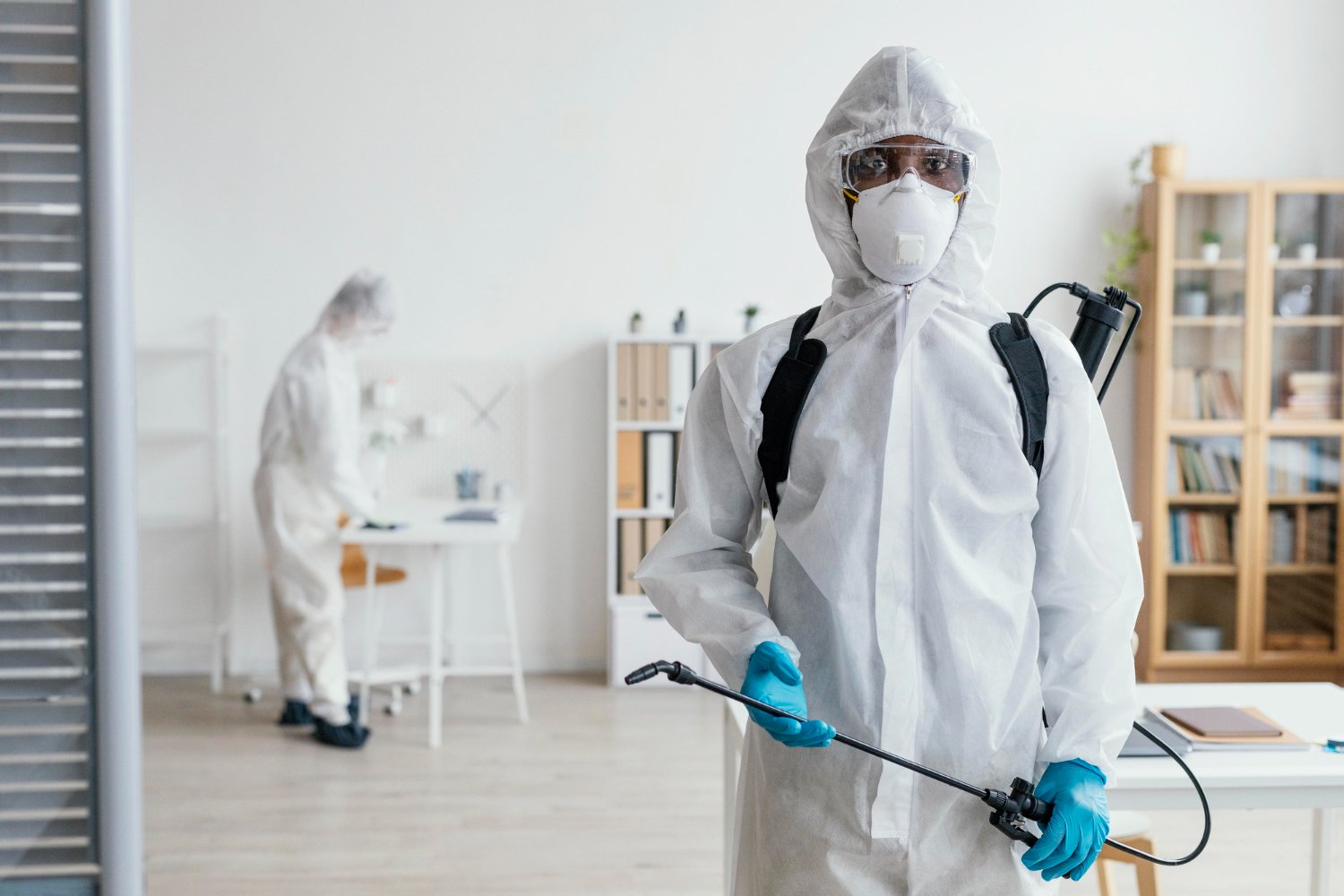Pest Removal Specialists Chicago: Experienced Specialists for All Sorts Of Pests
Pest Removal Specialists Chicago: Experienced Specialists for All Sorts Of Pests
Blog Article
A Comprehensive Guide to the Different Kinds Of Insect Control Methods
With the myriad of parasite control techniques readily available, it can be overwhelming to discover the most efficient option for a specific insect trouble. In this detailed guide, we will check out these various types of bug control methods, providing insights right into their applications and benefits. By the end, you will have a more clear understanding of which approach may be the finest fit for your bug control demands.
Chemical Insect Control Techniques

One typical kind of chemical insect control is insecticides. Pesticides target details bugs, such as mosquitoes, termites, or ants, and can be used both indoors and outdoors.
Another kind of chemical bug control is rodenticides. These are chemical compounds developed to regulate populaces of rats, such as rats and mice.
Herbicide, likewise referred to as herbicides, are another type of chemical bug control method. Herbicides are developed to selectively eliminate undesirable plants, referred to as weeds, without triggering injury to desirable plants. They are frequently made use of in agriculture, landscaping, and horticulture to manage the growth of undesirable greenery.
While chemical parasite control approaches can be highly efficient in getting rid of pests, it is vital to utilize them judiciously and follow safety standards. Overuse or abuse of chemical pesticides can have negative influence on human health and the setting. It is essential to employ these methods responsibly and take into consideration alternate pest control strategies whenever possible.
Biological Bug Control Techniques
Organic pest control approaches include making use of living organisms or all-natural materials to manage and regulate pest populations. Unlike chemical approaches, which frequently rely upon artificial pesticides, organic control techniques use the natural opponents of parasites to regulate their populations. This technique is considered even more environmentally friendly and lasting, as it reduces using damaging chemicals and reduces the danger of pesticide resistance.
One extensively utilized organic parasite control approach is the intro of natural killers or parasites. For instance, ladybugs are introduced to regulate aphids, while certain wasp types are released to target caterpillars. These killers and parasites feed on pests, minimizing their numbers and stopping problems.
Another organic control technique is using microorganisms. Specific bacteria, infections, and fungi can be employed to infect and kill certain pests. The germs Bacillus thuringiensis is typically made use of to regulate caterpillars, as it produces contaminants that are lethal to these parasites.
Organic control techniques can likewise involve making use of pheromones or all-natural compounds that disrupt the breeding patterns of pests. By conflicting with their reproduction, these approaches my company help to reduce pest populations gradually.
While biological bug control methods are usually effective, they may call for longer periods to attain desired outcomes contrasted to chemical techniques. Additionally, mindful consideration has to be provided to the option and launch of natural enemies to protect against unexpected injury to useful microorganisms or communities.
Physical Parasite Control Approaches
To efficiently take care of and regulate pest populaces, alternative bug control Check Out Your URL approaches called physical pest control methods are utilized. These approaches entail using physical barriers, catches, or devices to avoid parasites from accessing or harming building. One common physical pest control approach is making use of screens or nets to keep bugs out of buildings or yards. These displays are usually made from great mesh product that permits air flow while protecting against bugs from going into. Another physical pest control method is the installation of fences or walls to maintain bigger pests, such as deer or rabbits, out of yards or farming areas. These obstacles literally block the pests' access to the area, reducing the potential for damages. In addition, traps and gadgets can be utilized to record or ward off bugs. For instance, sticky traps can be placed in locations where pests are a trouble, and the pests become stuck to the adhesive surface area. Ultrasonic gadgets can also be used to produce high-frequency audios that are undesirable to insects, causing them to leave the location. Physical bug control methods are an eco-friendly alternative to chemical pesticides, as they do not rely upon making use of damaging chemicals.
All-natural Insect Control Approaches
Natural insect control methods supply a lasting and eco-friendly strategy to handling and getting rid of bugs. One of the most common all-natural bug control techniques is biological control. By taking on these natural pest control approaches, individuals and communities can effectively take care of insects while minimizing the unfavorable influences on the atmosphere and human health and wellness.
Integrated Parasite Management (IPM)
Integrated Parasite Administration (IPM) is a comprehensive and methodical strategy to pest control that combines various methods and techniques to efficiently take care of parasites while reducing the usage of chemical pesticides. IPM aims to keep bug populations below the financial injury level by making use of a mix of cultural, biological, and chemical control approaches.
Cultural control approaches involve modifying the environment to make it much less favorable for pests. This can consist of methods such as plant rotation, proper cleanliness, and the usage of immune plant selections. By creating unfavorable conditions for pests, cultural control methods can visit the site dramatically reduce pest populations.

Chemical control methods are made use of as a last resource in IPM. They include the targeted and sensible use of pesticides to take care of bug populations. Unlike standard bug control techniques, IPM aims to decrease the use of chemical pesticides by employing different methods.
Integrated Insect Monitoring (IPM) is an aggressive method that concentrates on lasting insect monitoring instead than relying exclusively on responsive procedures. By combining numerous control methods, IPM gives a more lasting and eco-friendly strategy to pest control.
Verdict
Finally, this article has supplied a detailed introduction of the various kinds of parasite control techniques. It went over chemical, biological, physical, and natural insect control approaches, in addition to the integrated bug monitoring method. By comprehending these different techniques, individuals can make enlightened decisions on which bug control method is most appropriate for their details needs and preferences. Efficient bug control is vital in maintaining a healthy and pest-free atmosphere.
Report this page